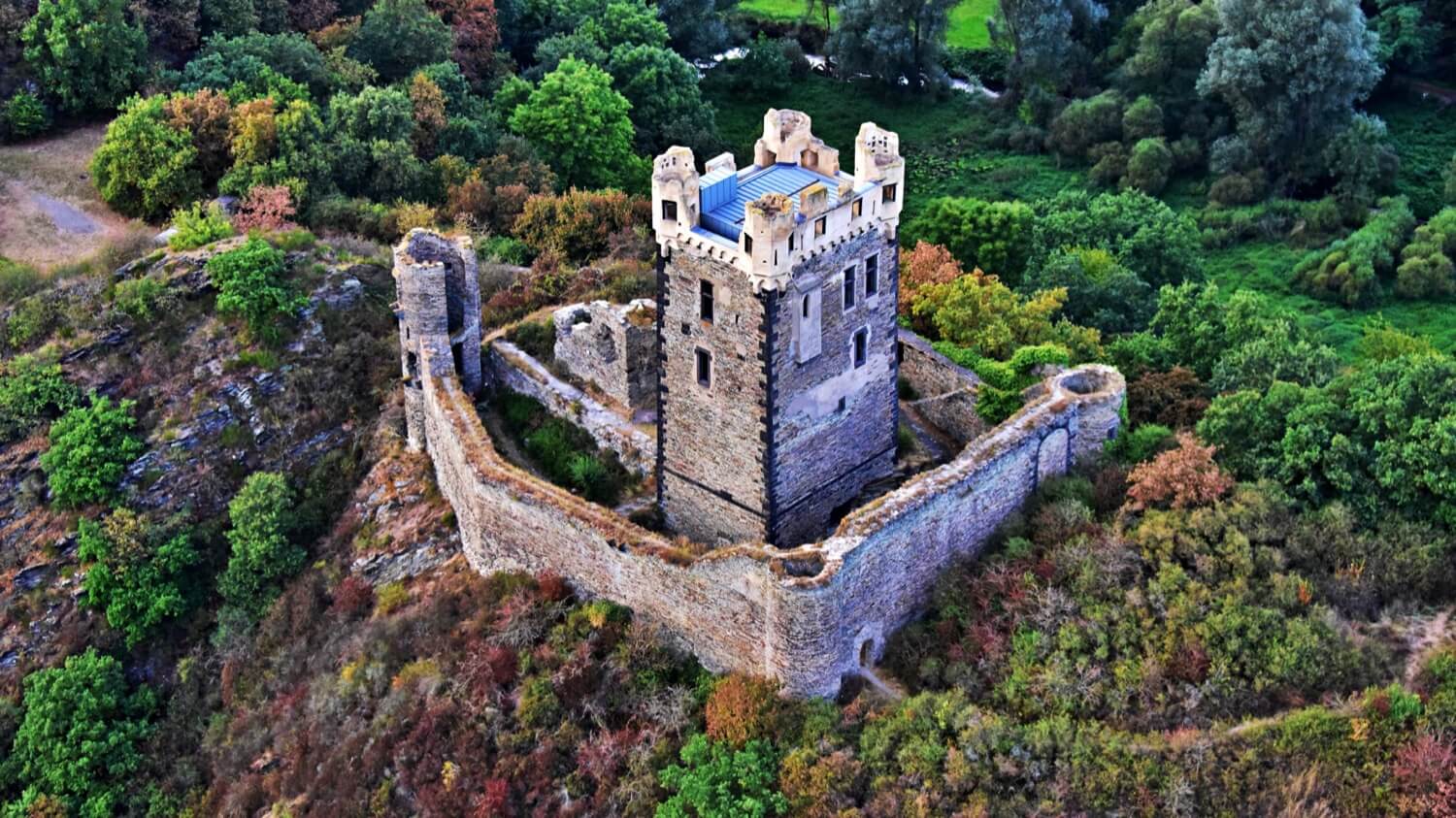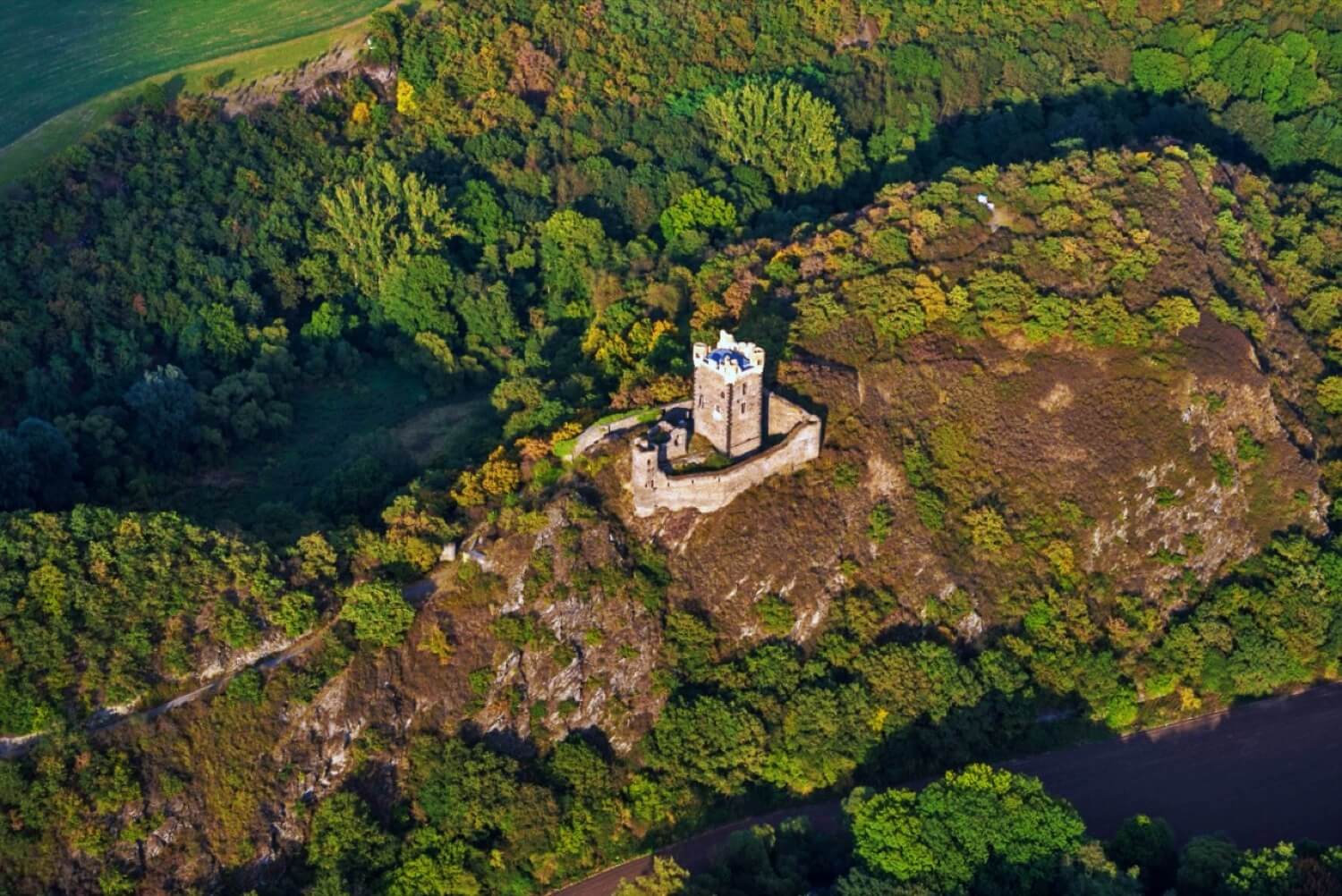Burg Wernerseck
Mayen-Koblenz Rhineland-Palatinate Germany
castle, chateau
Burg Wernerseck
Mayen-Koblenz Rhineland-Palatinate Germany
castle, chateau
Wernerseck Castle, also called the Kelterhausburg, is a late medieval hill castle in the municipality of Ochtendung in the county of Mayen-Koblenz in the German state of Rhineland-Palatinate
Burg Wernerseck, auch Kelterhausburg genannt, ist eine spätmittelalterliche Burganlage auf dem Gebiet der Gemeinde Ochtendung im Landkreis Mayen-Koblenz in Rheinland-Pfalz
Previous names
Burg Wernerseck, Burg Wernerseck
Description
Wernerseck Castle, also called the Kelterhausburg, is a late medieval hill castle in the municipality of Ochtendung in the county of Mayen-Koblenz in the German state of Rhineland-Palatinate. It owes its name to its founder and lord of the castle, the Archbishop of Trier, Werner of Falkenstein (1388–1418). "Wernerseck" means "Werner's corner".
History
The Trier
prince-elector and archbishop, Werner of Falkenstein, began building the castle in late 1401 as part of his expansion policy in the Pellenz area. Thus, the site was not in the district of Ochtendung, which belonged to Electoral Trier, but in the feudal area of the counts of Virneburg. The castle was intended to act as a border fortress, guarding it against the principality of the Archbishop of Cologne. However, the castle never fulfilled this purpose, as the borders were realigned whilst it was being built. Later the castle was used as an administrative centre. Conrad Colbe of Boppard was probably appointed as the first Amtmann (bailiff) in 1412. From the 16th century onwards, the castle was enfeoffed to the lords of Eltz, who owned it until the 19th century. From 1966 to 1969 there was a falconry at the castle. A preservation society has set itself the task of securing and renovating the dilapidated castle and, between summer 2006 and November 2007, the tower house was renovated.
Phases of construction
In the first construction phase at Wernerseck, the tower house was built as part of a simpleenceinte. The protruding bricks on the north side of the main tower, which used to join it firmly to a wall, can be seen as evidence of this. Furthermore, on the south and east side, there is a band of basalt stones in the brickwork, which could have been decoration on the outside of the castle. The curtain walls largely follow the line of the wall of the older, Ottonian castle, including its gateways. In a later extension, the surrounding wall was extended and provided with corner towers.
Older castle remains
The remains of an older castle, which were used in the construction of Wernerseck, can be found in various parts of the castle and which have thus survived the ravages of time. The masonry at these points differs from that of the later castle in that smaller slate stone was employed. Particularly noteworthy are the half of a gate system next to the tower house, part of the later inner gateway, and the remains of a building in the centre of the castle. Its predecessor probably followed the uninterrupted rocky hillcrest at that time and included the plateau in the area of the later outer bailey. Since there are no definitively dateable finds from the time before the new castle was built, its date of construction can only be estimated from the structural evidence. In the inner gateway, the remains of an older gateway have survived that is almost identical to that of the Waldschlössel at Klingenmünster. This suggests that the original castle should be regarded as an Ottonian build of the 10th to 11th century. There are no written records of the old castle, but it is not unreasonable to attribute its construction to the counts palatine of Laach.
Burg Wernerseck, auch Kelterhausburg genannt, ist eine spätmittelalterliche Burganlage auf dem Gebiet der Gemeinde Ochtendung im Landkreis Mayen-Koblenz in Rheinland-Pfalz. Sie verdankt ihren Namen ihrem Gründer und Bauherrn, dem Erzbischof von Trier Werner von Falkenstein (1388–1418).
Geschichte
Der Trierer Kurfürst und Erzbischof Werner von Falkenstein begann den Bau der Burg Ende des Jahres 1401 im Zuge seiner Expansionspolitik im Gebiet der Pellenz. Damit lag der Bauplatz nicht mehr in der Gemarkung von Ochtendung, das zu Kurtrier gehörte, sondern bereits im Lehnsgebiet der Grafen von Virneburg. Sie diente als Grenzfestung gegen den Erzbischof von Köln. Diesem Zweck wurde die Burg jedoch nie gerecht, da sich die Grenzen während der Bauarbeiten verschoben. Später wurde die Burg zur Verwaltung genutzt. Vermutlich wurde Konrad Kolbe von Boppard 1412 zum ersten Amtmann eingesetzt. Seit dem 16. Jahrhundert war die Burg an die Herren von Eltz verpfändet, die sie bis ins 19. Jahrhundert besaßen. Von 1966 bis 1969 war eine Falknerei auf der Burg eingerichtet. Ein Förderverein hat sich die Sicherung und Renovierung der baufälligen Burg zur Aufgabe gemacht und zwischen Sommer 2006 und November 2007 den Wohnturm renoviert.
Bauphasen
In der ersten Bauphase von Wernerseck entstand der Wohnturm als Bestandteil (Süd-Ost-Ecke) einer einfachen Ringmauer. Als ein Beleg dafür können die auskragenden Mauersteine an der Nordseite des Hauptturms gewertet werden, die ihn ehemals mit einer Mauer fest verband. Des Weiteren befindet sich an seiner Süd- und Ostseite in seinem Mauerwerk ein Band aus Basaltsteinen, das möglicherweise die Außenseite der Burganlage dekorieren sollte. Die Ringmauer folgte in weiten Teilen dem Mauerverlauf der älteren, ottonenzeitlichen Burganlage unter Einbeziehung des Torbauses. In einem späteren Ausbau wurde die Ringmauer erweitert und mit Ecktürmen versehen.
Ältere Burgreste
In der Burg finden sich an verschiedenen Stellen die Reste eines älteren Burgbaus, die bei der Errichtung von Wernerseck mitverwendet wurden und so die Zeit überdauerten. Das Mauerwerk weicht an diesen Stellen durch die Verwendung von kleinformatigere Schiefergestein vom später errichteten ab. Besonders erwähnenswert sind die Hälfte einer Toranlage neben dem Wohnturm, einem Teil des späteren inneren Torbaus, und die Reste eines Gebäudes im Zentrum der Burg. Der Vorgängerbau folgte wahrscheinlich dem damals noch nicht unterbrochenen Felskamm und schloss so auch das Plateau in Bereich der späteren Vorburg mit ein. Da es keine sicher datierbaren Funde aus der Zeit vor dem Bau der neuen Burg gibt, kann nur aus den baulichen Befunden auf deren Entstehungszeit geschlossen werden. Im inneren Torbau sind die Reste eines älteren Torbaus erhalten, der nahezu identisch mit dem des Waldschlössels bei Klingenmünster ist. Dies legt den Schluss nahe, die ursprüngliche Burg als ottonenzeitliche Anlage aus der Zeit des 10. bis 11. Jahrhunderts anzusehen. Die alte Burg wurde urkundlich nie erwähnt. Es ist nicht unwahrscheinlich, ihre Errichtung den Pfalzgrafen zu Laach zuzuschreiben.
Useful information
Gratis
- Ruinen der Burg
- Nur außerhalb zu besuchen
-
Nearby castles
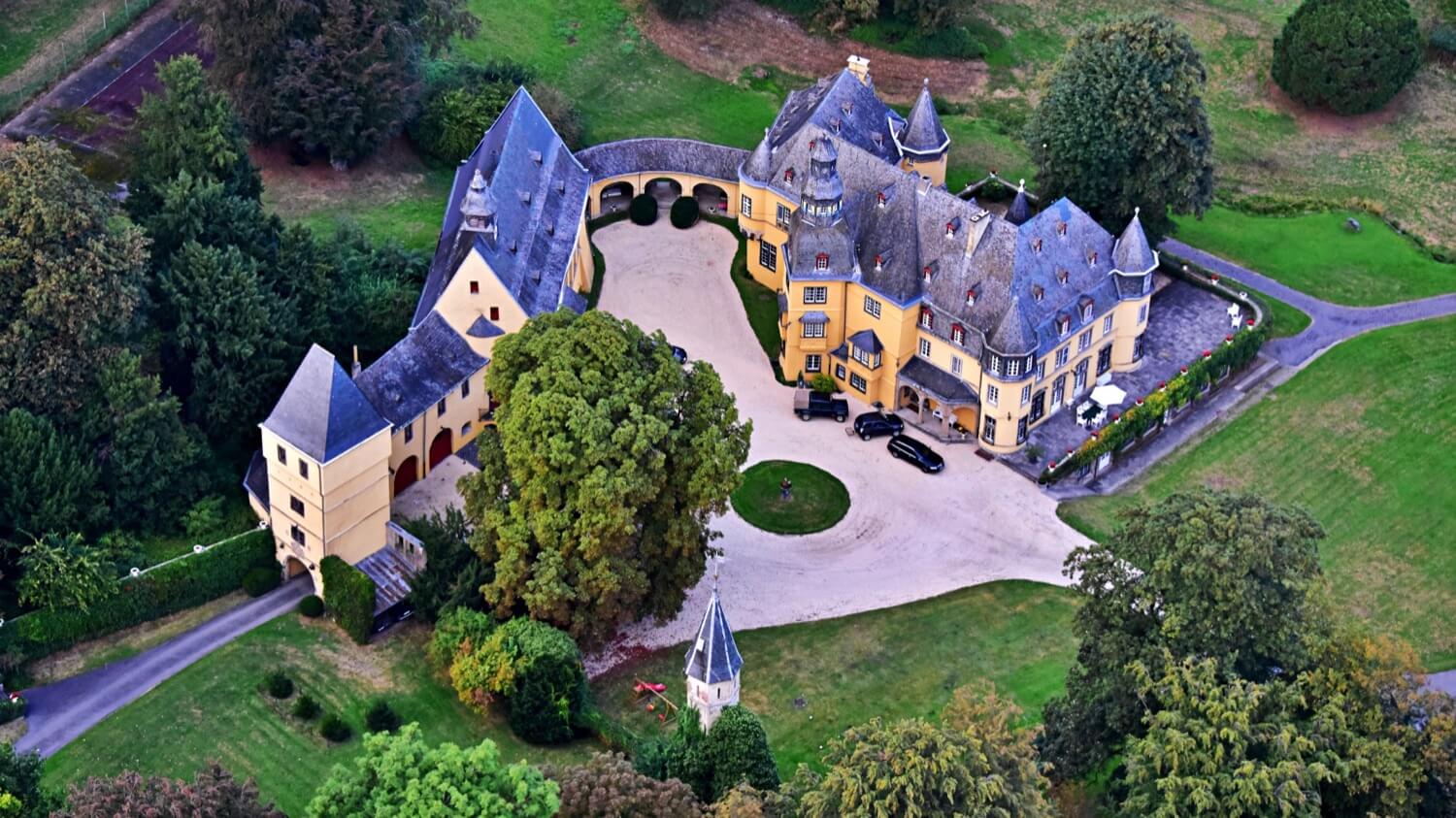
Schloss Bassenheim
Mayen-Koblenz
5.9km
castle, chateau
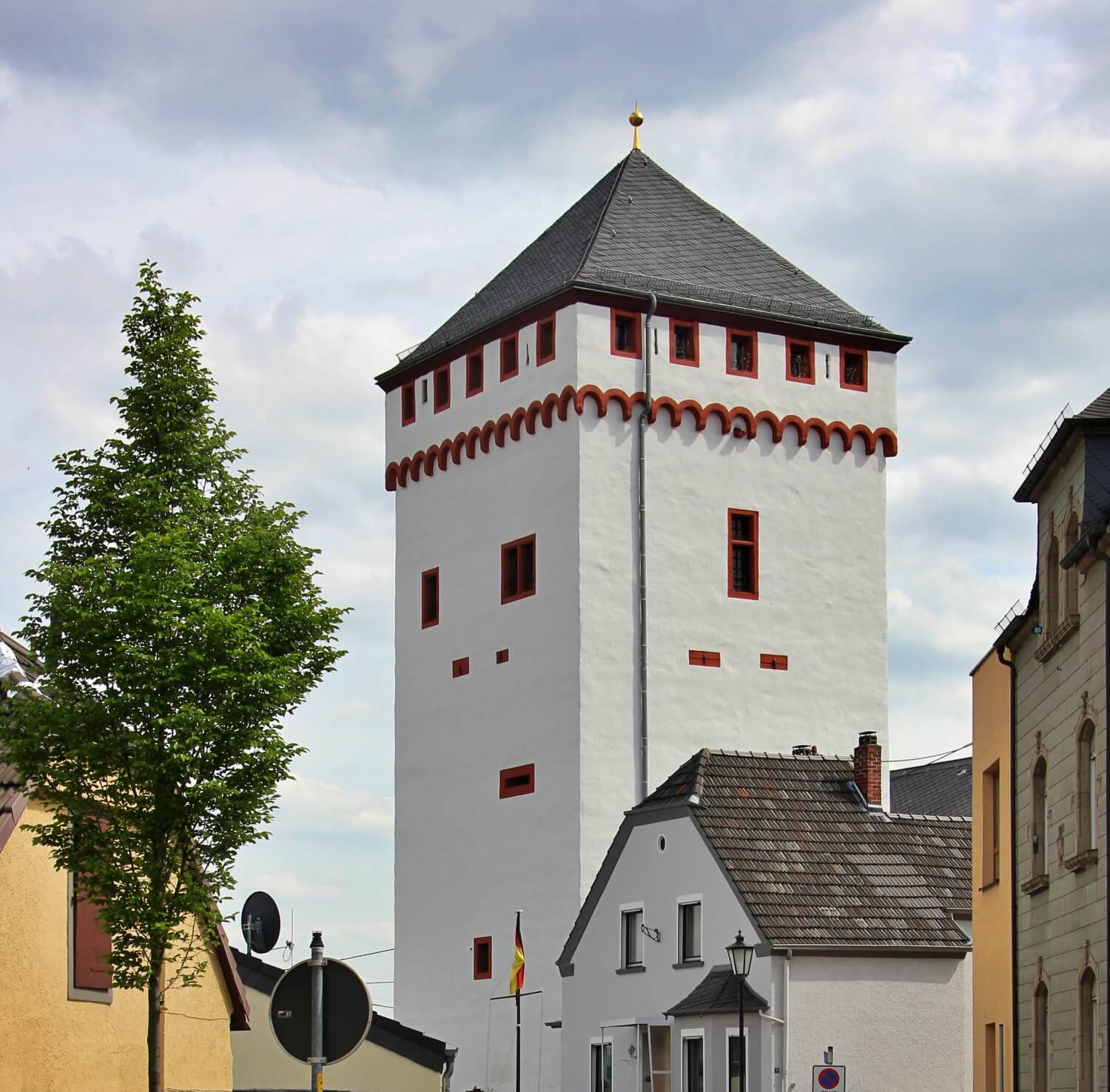
Weisser Turm (Weissenthurm)
Mayen-Koblenz
7.4km
castle, chateau
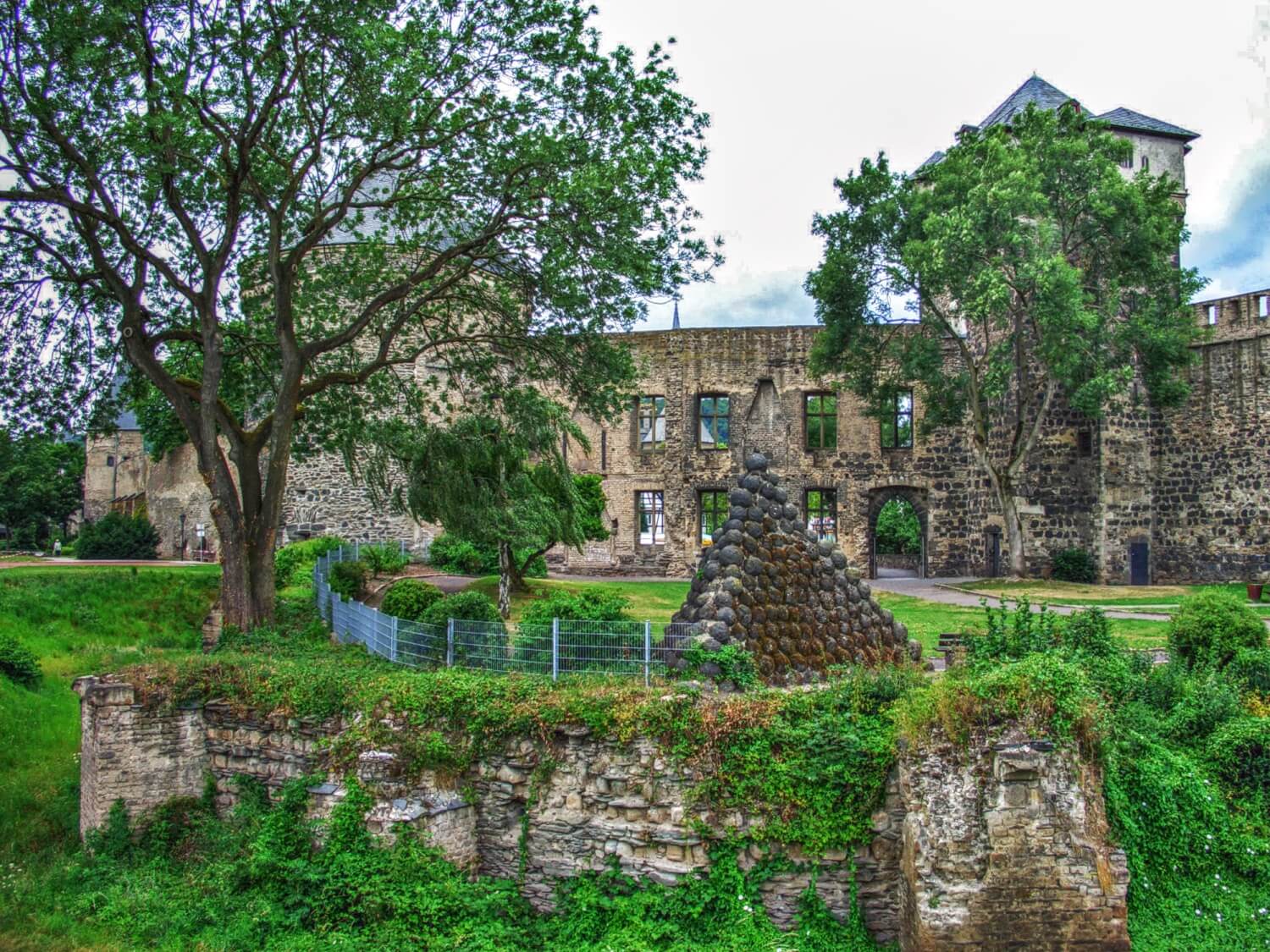
Stadtburg Andernach
Mayen-Koblenz
7.7km
castle, chateau
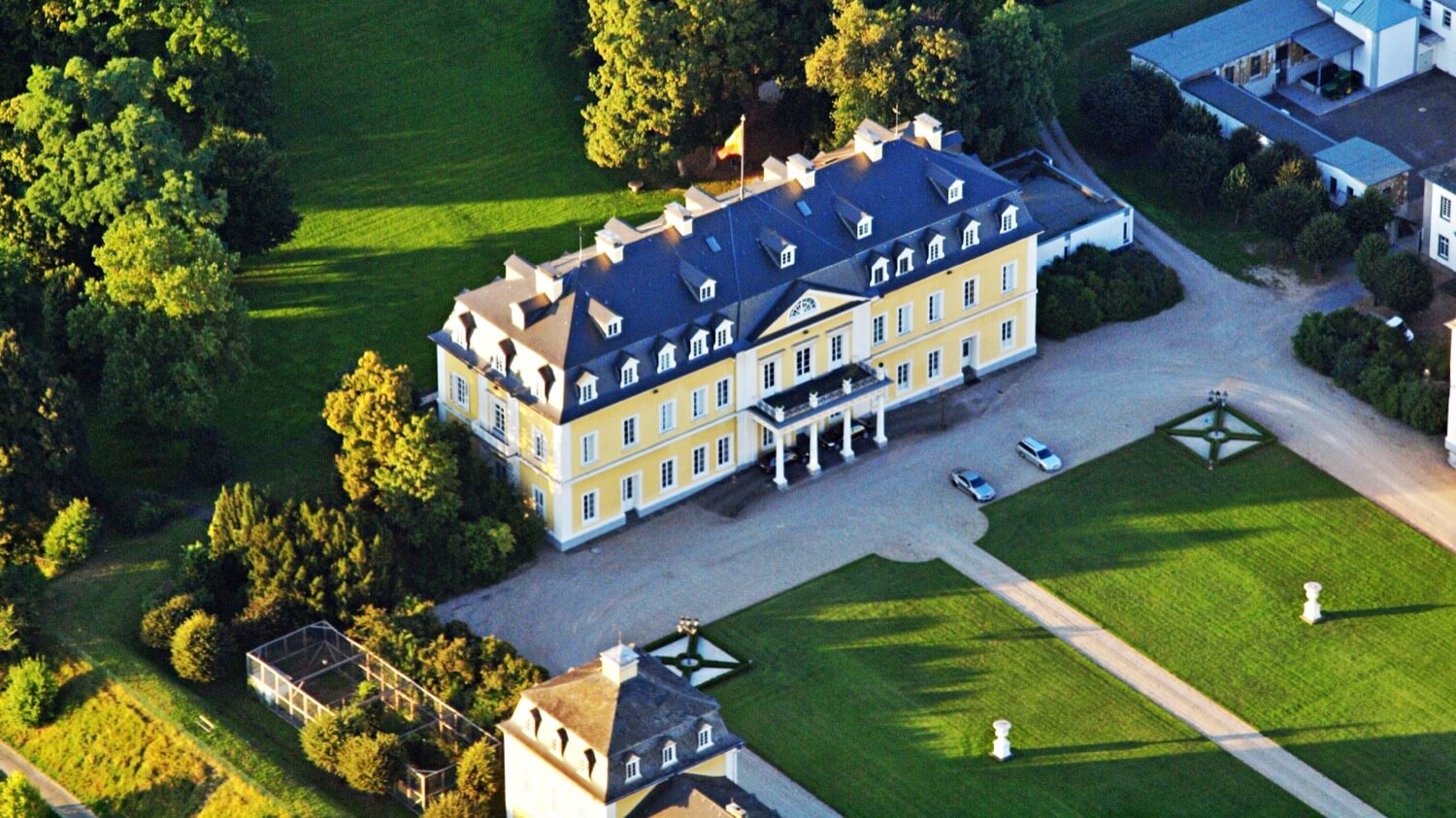
Schloss Neuwied
Neuwied
8.4km
castle, chateau
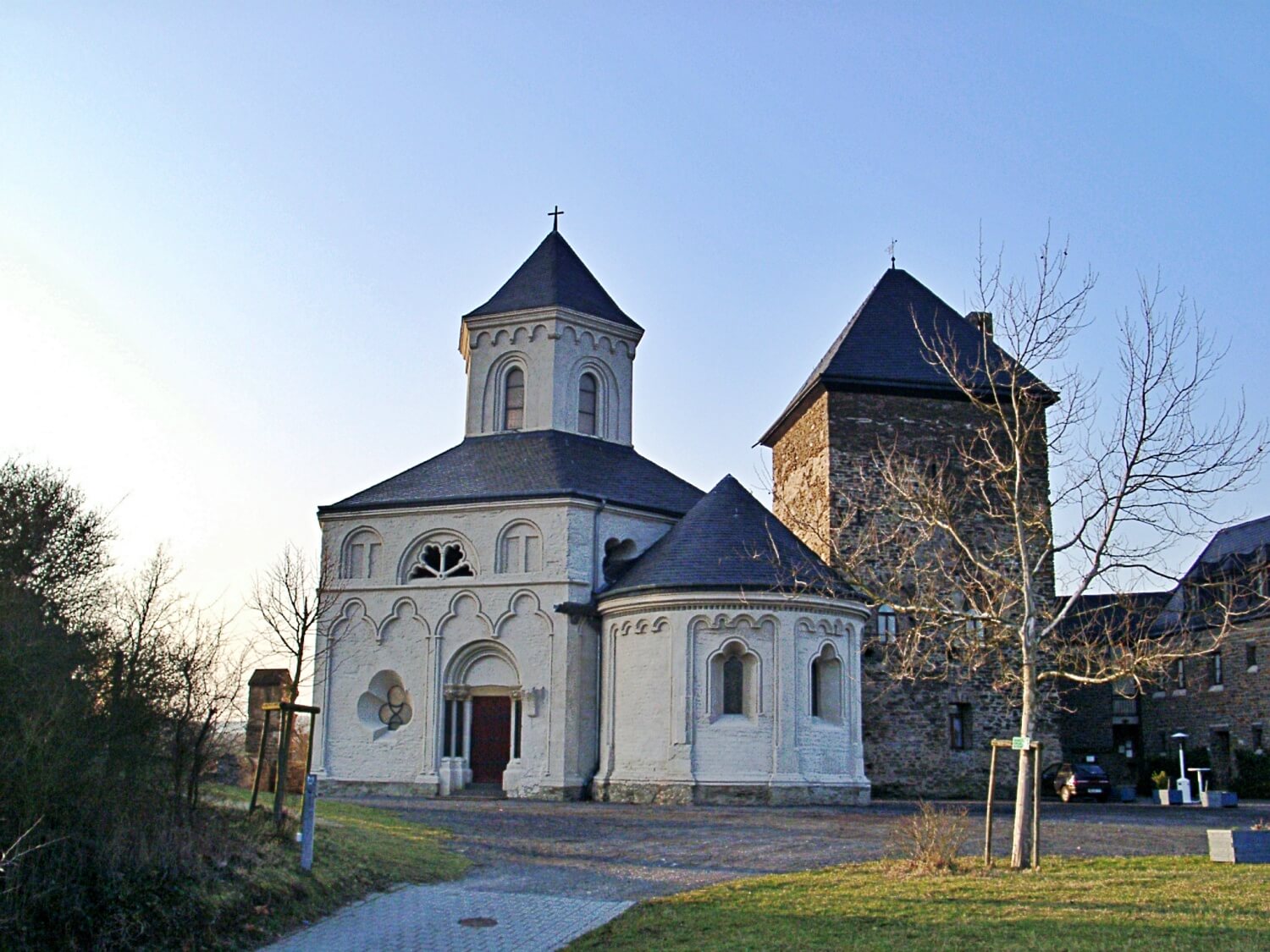
Oberburg Kobern
Mayen-Koblenz
8.4km
castle, chateau
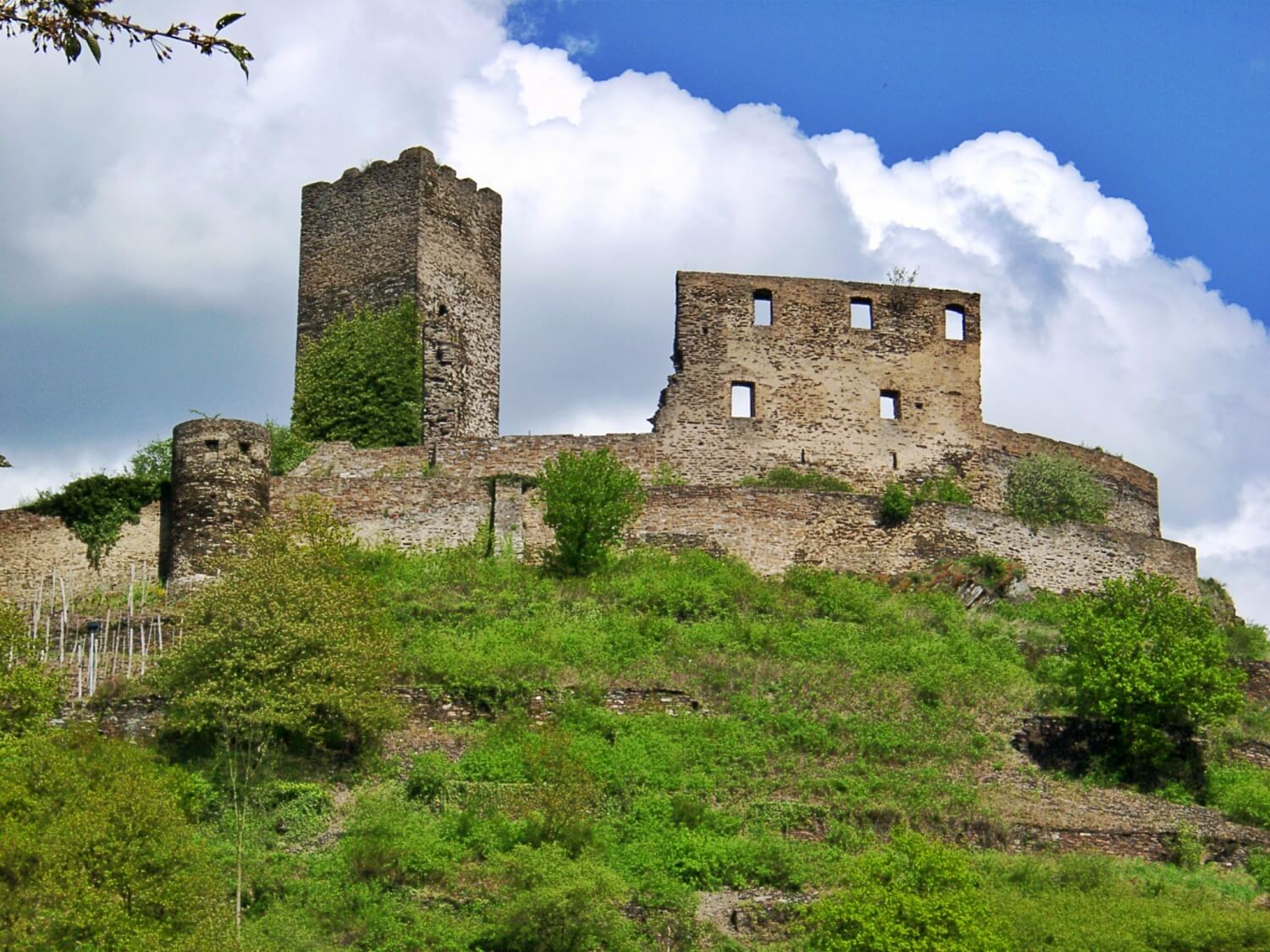
Niederburg Kobern
Mayen-Koblenz
8.8km
castle, chateau
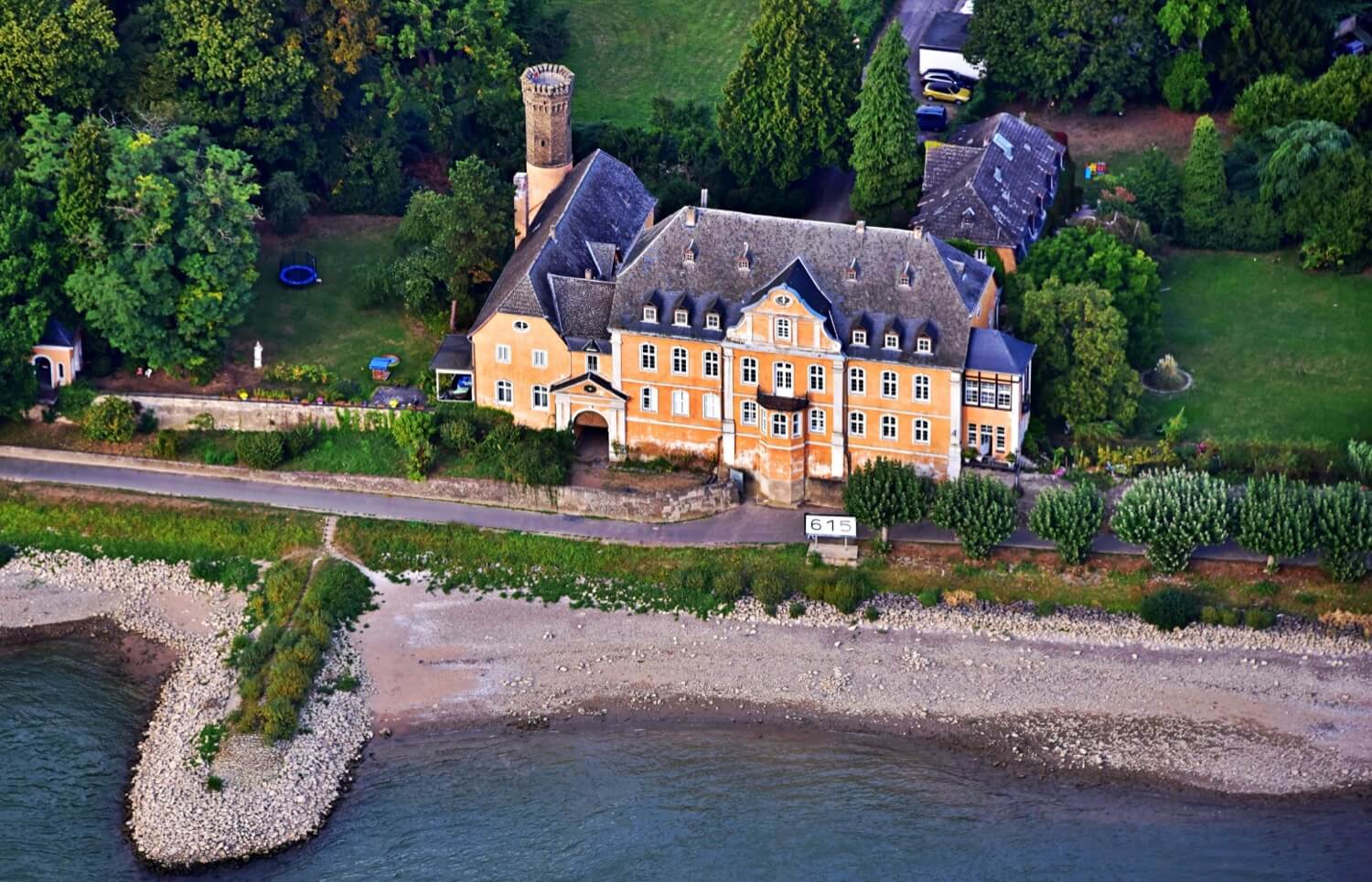
Schloss Marienburg (Leutesdorf)
Neuwied
8.9km
castle, chateau
